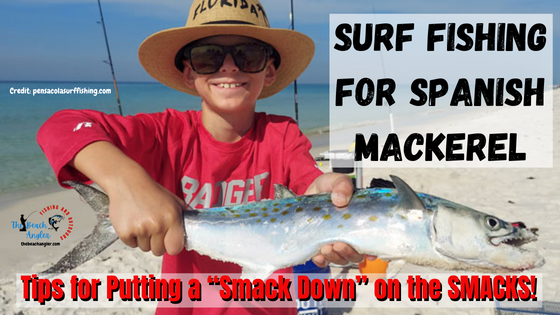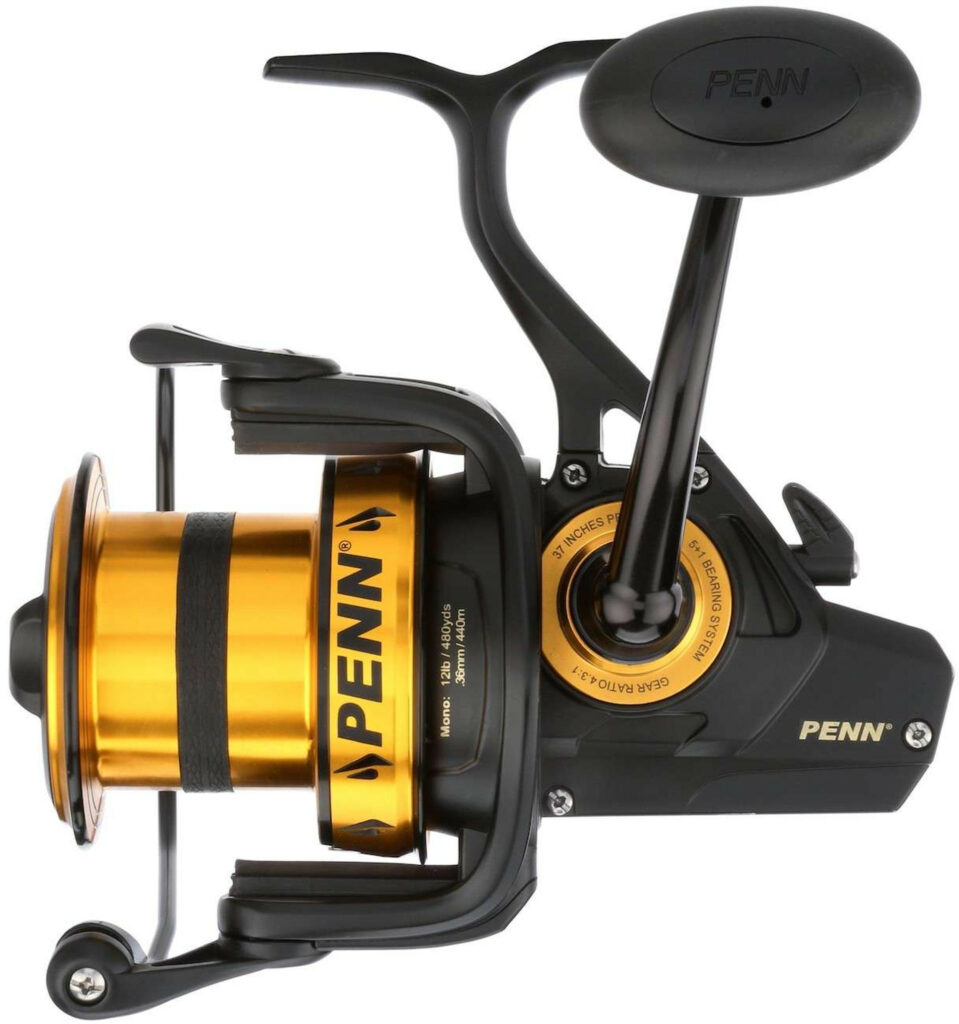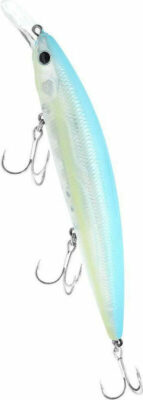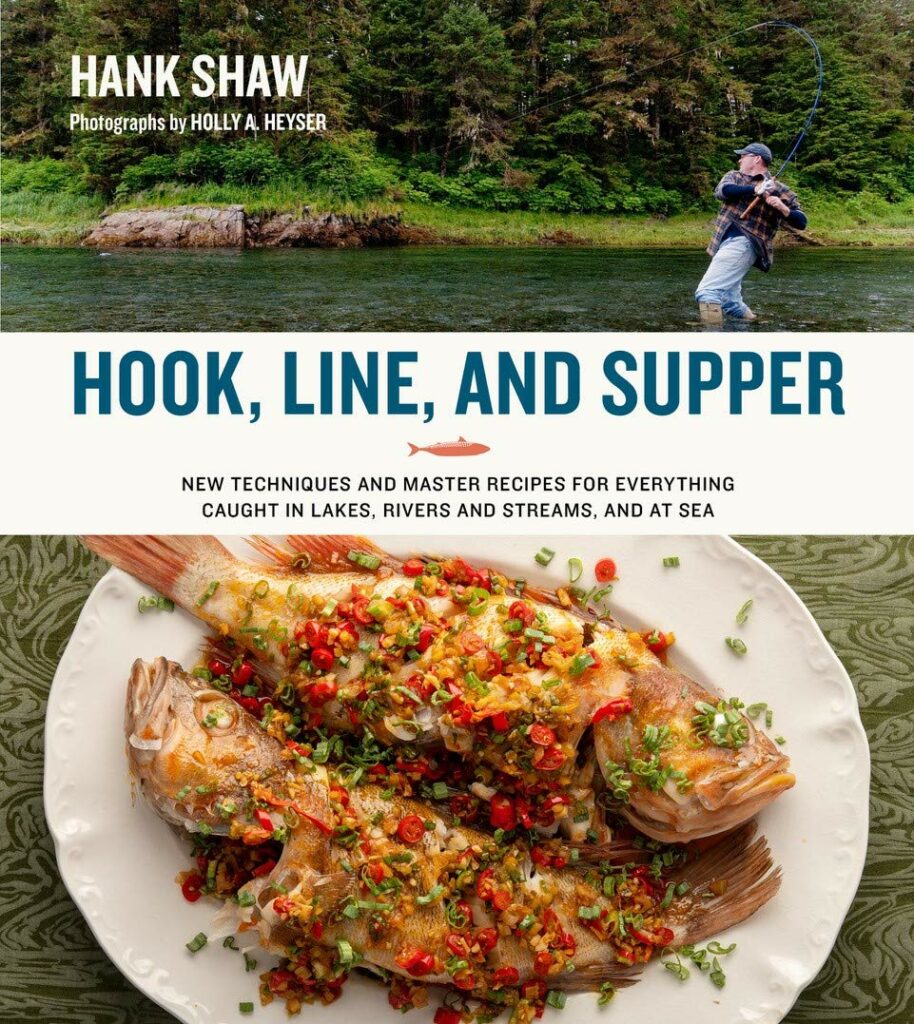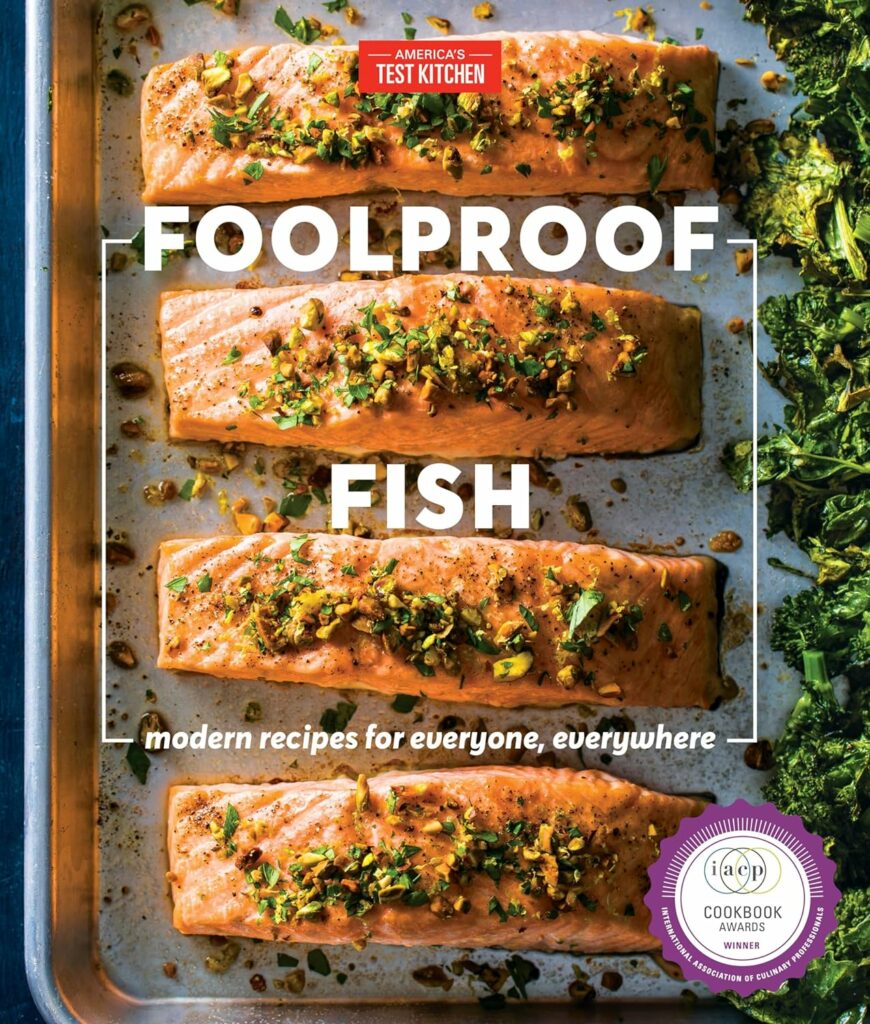Surf fishing for Spanish mackerel is both fun and exciting. And, it can be enjoyed by anglers of all skill levels. Spanish mackerel are fast and powerful fish that put up a great fight on light tackle. They are also delicious to eat, making them a popular target for surf anglers. And, they are another alternative species for the dinner table, like gafftop catfish and gulf kingfish, to take some of the pressure off of the big three: red drum, speckled trout, flounder.
Key Takeaways
- Understanding the behavior of Spanish mackerel is key to catching them.
- Proper gear and techniques are necessary for successful surf fishing.
- Spanish Mackerel make great table fare if properly cleaned and prepared.
- They are a fun and sporty fish that can be caught by anglers of all skill levels
Known for their sharp teeth and lightning-fast speed, Spanish mackerel are a challenge to catch. They show up along the beach front, in late summer and early fall, following schools of migrating baitfish like dusky anchovies, and even more so, finger mullet.
However, with the right gear and techniques, you can increase your chances of landing one of these prized game fish. When it comes to surf fishing for Spanish mackerel, there are a few basics you need to know.
You’ll need a long surf rod with heavy action to cast your bait further into the water, as well as a variety of lures and baits that mimic the small prey that Spanish mackerel love to eat. With the right gear and techniques, you can increase your chances of catching these speedy game fish.

Understanding Spanish Mackerel
To start, it’s important to understand the behavior of Spanish mackerel. They are typically found in warm coastal waters, often in large schools. They typically hunt for their prey in water that’s anywhere from 20 feet to 5 feet deep, and they will go wherever they are most likely to find bait fish congregating in large numbers.
This means that if you want to catch Spanish mackerel, you need to know where to find them. When it comes to surf fishing for Spanish mackerel, it’s important to understand the fish you’re trying to catch. Here’s what you need to know about these fish:
First, What is a Spanish Mackerel?
The Spanish mackerel (Scomberomorus maculatus), also known as Mackerel, Spotted cybium, Bay mackerel, Spotted mackerelis or SMACKS, is much smaller than its relative, the king mackerel, averaging only 2 to 3 pounds in weight. Spanish mackerel are greenish dorsally with silver sides and bellies, a slender, torpedo-shaped body with a pointed head and a forked tail.

Yellow or olive oval spots traverse the body, which is covered with very tiny scales. The lateral line curves gently to the base of the tail. Like most mackerels, they have a row of sharp teeth in their mouth that they use to catch and eat their prey. These same teeth can make short work of monofilament line, soft plastic baits, and your fingers if you’re not careful.
Habitat
Spanish mackerel are found in warm coastal waters, usually in depths of 20 to 60 feet. They are a migratory fish and can be found along the Atlantic coast from Maine to Florida and in the Gulf of Mexico. Spanish mackerel form immense, fast-moving schools that are distributed from New York to Mexico, preferring water temperatures above 68° F.
Unlike king mackerel, Spanish mackerel do not appear to move freely around the Florida Keys, creating two subpopulations, one in the Gulf and the other off the southeastern states. Spanish mackerel are fast-growing and may live to be 8 years old. Both sexes are capable of reproduction by the second year.
Spawning occurs from April to September off the North Carolina and Virginia coasts. Feeding Spanish mackerel are often seen forcing schools of small fish into tight bundles and nearly pushing them out of the water. This attracts the birds and other predators to the party.
Diet
Spanish mackerel are predatory fish that feed on small fish and squid. They are often found near schools of baitfish, such as sardines, mullet, and anchovies. When surf fishing for Spanish mackerel, it’s important to use bait that mimics their natural prey, such as live baitfish or brightly colored artificial lures. Watch for diving birds, schools of baitfish, or surface feeding activity.
The Basics of Surf Fishing for Spanish Mackerel
One of the most exciting and rewarding fish to catch from the surf is the Spanish mackerel. These fish are fast, powerful, and delicious, but they can also be tricky to hook and land. If you’re new to surf fishing, it can seem overwhelming at first. But with a little bit of knowledge and practice, you can be reeling in Spanish mackerel in no time.
If you want to try surf fishing for Spanish Mackerel, you need to have the right gear, bait, and technique. Here are some tips to help you get started, along with some more details to explain why they work:
Choosing the Right Gear
You’ll need some specialized gear for surf fishing. When it comes to surf fishing for Spanish mackerel, choosing the right gear is crucial. Here are some tips to help you select the right fishing gear for a successful outing.
Surf Rods and Reels
Use a long heavy-action surf rod to cast your bait further into the surf, where Spanish mackerel are often found. A long rod will give you more leverage and control over your cast, allowing you to reach the deeper water where the mackerel tend to hang out. A heavy-action rod will also be able to handle the weight of large baits and the force of the fish’s strikes.
If you find them chasing schools of bait in close, opt for a medium to heavy spinning rod with a length of 7 to 8 feet. Look for a rod that has a fast action and can handle a line weight of 12 to 30 pounds. You won’t need to cast as far and the shorter rod will be easier to cast than the longer rods.
You’ll be casting lures instead of bait so you will need the faster action to cast lighter lures. The longer rods are heavier and more suited to fishing baits on the bottom, and for times with the fish are at long distances. And, when fishing with baits, you might catch any number of other large predators like red drum, black drum, and sharks.
Choose a reel with good line capacity to handle the strength and speed of Spanish mackerel. A spinning reel is the most popular choice when surf fishing for Spanish mackerel. Look for a reel with a high gear ratio for fast retrieval and a smooth drag system to prevent line breaks. Make sure it can hold at least 200 yards of 12 pound mono or 30 pound braided line.
Fishing Line and Terminal Tackle
Braided line is the preferred choice for surf fishing for Spanish mackerel. It is strong, sensitive, and has a small diameter, which allows for longer casts. Use a line with a test weight of 12 to 30 pounds. Fluorocarbon leader is recommended to prevent line visibility and increase bite detection.
You’ll also need some terminal tackle, including hooks, sinkers, and swivels. When fishing with lures, use a wire, heavy fluorocarbon, or heavy mono, leader to connect your main line to your rig. The best bait rig to surf fish for Spanish mackerel is a simple fish-finder rig with a wire leader.
You can use a 1/0 to 4/0 circle hook for live bait, and surf weight, or spider weight, if fishing in strong currents. The wire leader is essential to prevent the sharp teeth of these fish from cutting your line. By selecting the right gear, you can increase your chances of catching Spanish mackerel while surf fishing. Remember to always check your gear before heading out and adjust your setup based on the conditions of the water and weather.
Baits and Lures
When it comes to bait to surf fish for Spanish mackerel, you have two choices, natural baits or artificial lures. The best, by far, is live baitfish, such as pilchards, mullet, or herring. You can catch your own baitfish from the surf with a cast net, or buy them from a local bait shop.
If live bait is not available, Spanish Mackerel will hit cut bait, but they prefer fresh live baits. If bait is scarce, you can also use artificial lures that mimic baitfish, such as spoons, jigs, plugs, or flies. Choose bright colors like silver, gold, or green to catch the attention of these fish. You can also add a wire leader to your rig to prevent the fish from biting through your line with their sharp teeth.
Artificials for Spanish Mackerel
Fishing Techniques
The best technique to surf fish for Spanish mackerel is to cast your bait or lure as far as you can into the surf zone, where these fish are often cruising. Then, if fishing with lures, reel in your line quickly and steadily, with occasional pauses or jerks to imitate a wounded baitfish. Be ready for a sudden strike and a strong fight from these fish .
Vary your retrieval speed and technique to imitate the erratic movements of a wounded baitfish, which will attract the mackerel. Spanish mackerel are opportunistic predators that will chase down any prey that looks weak or injured. By changing your retrieval speed and direction, you can make your bait look more realistic and enticing. You can also try twitching or jerking your rod tip to create sudden bursts of movement that will trigger the fish’s instinct to attack.
If casting bait for mackerel, once your bait is in the water, set your rods in sand spike rod holders so you can fish with multiple rods without having to hold on to them. You’ll need to keep an eye on your rod tip for any movement. Spanish Mackerel usually hit hard and fast leaving no doubt about a strike, but on occasion, they will swim towards shore with your bait. If you see your line go slack, reel in the slack and set the hook firmly.
Location
Choosing the right spot to fish can make all the difference. Look for areas where the waves are breaking, such as near sandbars, troughs, cuts, as this is where the fish will be hanging out looking for an easy meal. You can also look for structures like jetties or piers, which can provide cover for baitfish which will then attract Spanish mackerel.
However, the best location to surf fish for Spanish mackerel is where there is a lot of baitfish activity. Look for signs of feeding frenzy, such as diving birds, jumping fish, or splashing water. Spanish mackerel often feed in large schools that create a lot of commotion in the water. You can also listen for their distinctive popping sound as they break the surface of the water.
By following these basics, you’ll be well on your way to catching Spanish mackerel in the surf. Remember to always practice responsible fishing practices and follow local regulations.
Best Time for Surf Fishing
When it comes to surf fishing for Spanish Mackerel, timing is everything. Knowing when to fish can make all the difference in your success rate. Here are some factors to consider when deciding the best time for surf fishing:
Water Temperature
Spanish Mackerel prefer warm water temperatures, typically around 70°F. They are most active during the summer months when the water is warmest. However, they can also be found in the early spring and late fall when the water is still relatively warm.
Tides and Currents
Pay attention to the tides and currents, as Spanish mackerel often feed in areas with strong water movement. The tides and currents affect the behavior and location of baitfish, which in turn affect the behavior and location of Spanish mackerel. Generally, incoming or outgoing tides are the best times to surf fish for Spanish mackerel, as they bring more food and oxygen into the surf zone.
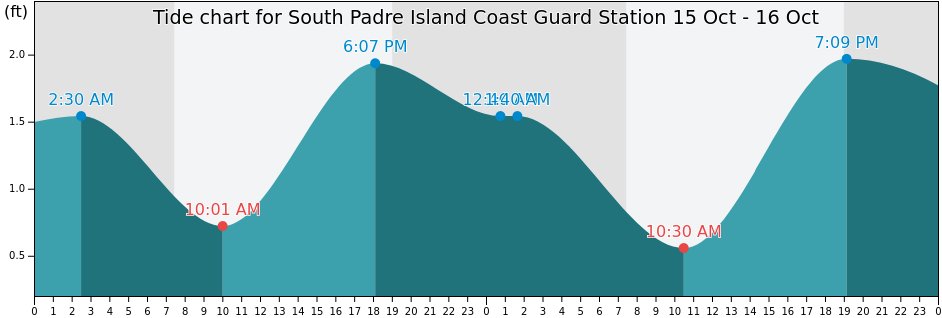
You can also look for areas where the current creates rips, eddies, or sandbars, as these are likely spots where baitfish will congregate and mackerel will hunt. Spanish Mackerel tend to be more active during incoming tides, when baitfish are pushed towards the shore. Fishing during a high tide can also help you reach deeper water where Spanish Mackerel may be feeding.
Time of Day
While Spanish Mackerel can be caught at any time of day, they tend to be more active during the early morning and late afternoon when the sun is low and the light is dim. This is when these fish are more active and less wary of predators. This is also when the water is cooler and baitfish are more active. Look for days when you have a strong, incoming or outgoing, tide early in the morning or late in the afternoon.
Season of the Year
The best time of the year to surf fish for Spanish mackerel is generally from spring to summer, through early fall, when the water temperature reaches around 70 degrees or higher. This is when these fish migrate along the coast and feed on schools of baitfish near the shore.
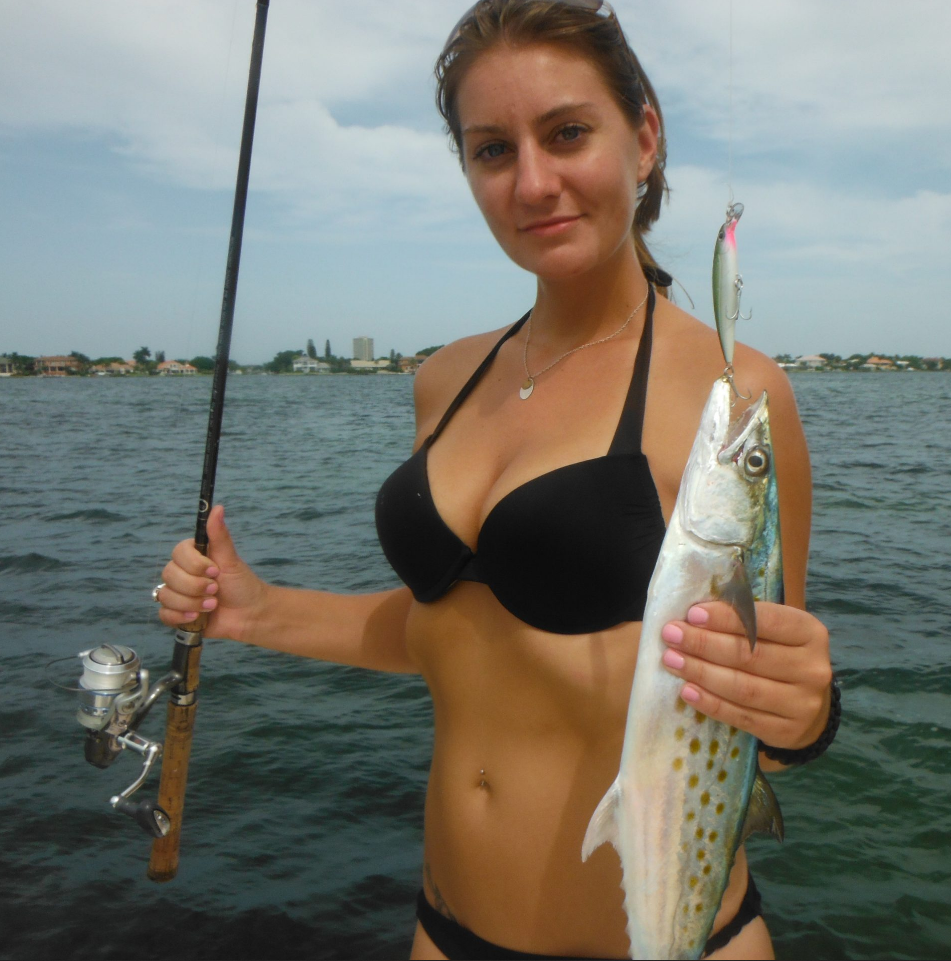
The best time of year to fish for Spanish Mackerel can vary depending on your location. In Florida, for example, Spanish Mackerel fishing is best in March and April, while in the Gulf of Mexico, they start to make their presence known around early April and are most active during the summer months into the fall.
Overall, the best time for surf fishing for Spanish Mackerel is during the warmer months, on incoming tides, and during the early morning or late afternoon. However, it’s important to keep in mind that fishing conditions can change quickly, so it’s always a good idea to check the weather and tide conditions before heading out.
Handling and Releasing Spanish Mackerel
When it comes to handling and releasing Spanish mackerel, it’s important to take care of the fish to ensure their survival. Here are some tips to help you handle and release Spanish mackerel properly:
Handling Spanish Mackerel
When you catch a Spanish mackerel, it’s important to handle it with care. These fish have sharp teeth that can easily cut through skin, so it’s best to use a pair of pliers to remove the hook. If you need to handle the fish, make sure to hold it by the body and avoid touching the gills or eyes.
Releasing Spanish Mackerel
If you’re not planning on keeping your Spanish mackerel, it’s important to release it properly to ensure its survival. Here are some tips for releasing Spanish mackerel:
- Use a dehooking tool to quickly and safely remove the hook.
- Avoid touching the gills or eyes, as this can cause damage to the fish.
- Hold the fish gently by the body and place it back in the water as quickly as possible.
- If the fish is exhausted, hold it in the water and move it back and forth to help it regain its strength before releasing it.

By handling and releasing Spanish mackerel properly, you can help ensure the survival of these amazing fish for future generations to enjoy.
How to Clean Spanish Mackerel
After catching a Spanish mackerel in the surf, you might want to enjoy its delicious taste by cooking it. But before you do that, you need to clean it properly to remove the guts, skin, and bones. Here are some steps to help you clean a Spanish mackerel in a simple and easy way.
- Rinse the fish in cold water. This will help remove any dirt or debris from the surface of the fish.
- Cut off the head just behind the gills. You can use a sharp knife or a pair of scissors to do this. This will also remove most of the guts of the fish.
- Cut along the backbone from the head to the tail. You can use the tip of your knife to feel the spine and follow it with your blade. This will separate the fillet from the skeleton .
- Cut out the rib cage from the fillet. You can use your knife to cut along the edge of the ribs and remove them from the meat. Be careful not to cut too deep and waste any flesh .
- Cut off the skin from the fillet. You can use your knife to slide under the skin and peel it off from the meat. Start from the tail end and work your way up to the head end .
- Cut out the bloodline from the fillet. You can use your knife to cut along both sides of the dark red strip that runs along the center of the fillet. This will remove any fishy taste from the meat.
- Rinse the fillet in cold water again. This will help wash off any blood or scales that might be left on the meat.
- Pat dry the fillet with paper towels. This will help remove any excess moisture from the meat and make it easier to cook.
You have now cleaned a Spanish mackerel and are ready to cook it or store it for later use. You can cut the fillet into smaller pieces if you want, or leave it whole.
You can also season it with salt, pepper, lemon juice, or any other spices you like. Enjoy your fresh and tasty Spanish mackerel!
How to Cook Spanish Mackerel
Spanish mackerel is a delicious fish that can be cooked in various ways. Whether you prefer it grilled, baked, fried, or smoked, you can enjoy its rich flavor and tender texture. Here are some of the best ways to cook Spanish mackerel, along with some tips and recipes.
Grilling: Grilling is a great way to cook Spanish mackerel, as it gives the fish a nice charred flavor and crispy skin. You can grill the whole fish or the fillets, but make sure to oil the grill and the fish well to prevent sticking. You can also season the fish with salt, pepper, lemon juice, and herbs, or marinate it in your favorite sauce. Grill the fish over medium-high heat for about 4 minutes per side, or until the flesh flakes easily with a fork .
Baking: Baking is a simple and healthy way to cook Spanish mackerel, as it requires minimal oil and preserves the moisture of the fish. You can bake the whole fish or the fillets in an oven-proof dish, but make sure to score the skin of the fish to allow even cooking. You can also stuff the fish with garlic, herbs, and lemon slices, or top it with breadcrumbs, cheese, or tomatoes. Bake the fish in a preheated oven at 375°F for about 15 minutes, or until the flesh is opaque and flaky .
Frying: Frying is a quick and easy way to cook Spanish mackerel, as it gives the fish a golden crust and a juicy interior. You can fry the whole fish or the fillets in a skillet, but make sure to pat them dry and season them with salt, pepper, and flour. You can also coat them with egg and breadcrumbs, or cornmeal for extra crunch. Fry the fish in hot oil over medium-high heat for about 3 minutes per side, or until golden and crisp. Drain on paper towels and serve with lemon wedges .
Smoking: Smoking is a fantastic way to cook Spanish mackerel, as it imparts a smoky flavor and a firm texture to the fish. You can smoke the whole fish or the fillets in a smoker, but make sure to brine them first in salt water for about an hour to enhance their flavor and moisture. You can also add sugar, spices, or herbs to the brine for extra flavor. Smoke the fish over low heat for about 2 hours, or until the flesh is cooked through and easily flakes .
Spanish mackerel is a versatile fish that can be cooked in many delicious ways. Try these methods and recipes and enjoy this tasty seafood!
Spanish Mackerel Conservation Efforts
When it comes to Spanish mackerel fishing, it is important to be aware of conservation efforts to ensure the sustainability of the species. The good news is that U.S. wild-caught Spanish mackerel is a smart seafood choice because it is sustainably managed and responsibly harvested under U.S. regulations. The stocks are not overfished, and the fishing rate is not subject to overfishing.
Respect Local Regulations
Always be aware of local regulations and adhere to them to ensure your safety. Some areas may have restrictions on the use of certain fishing gear or limits on the number of fish you can catch. Make sure to check local regulations before heading out to avoid any legal trouble.
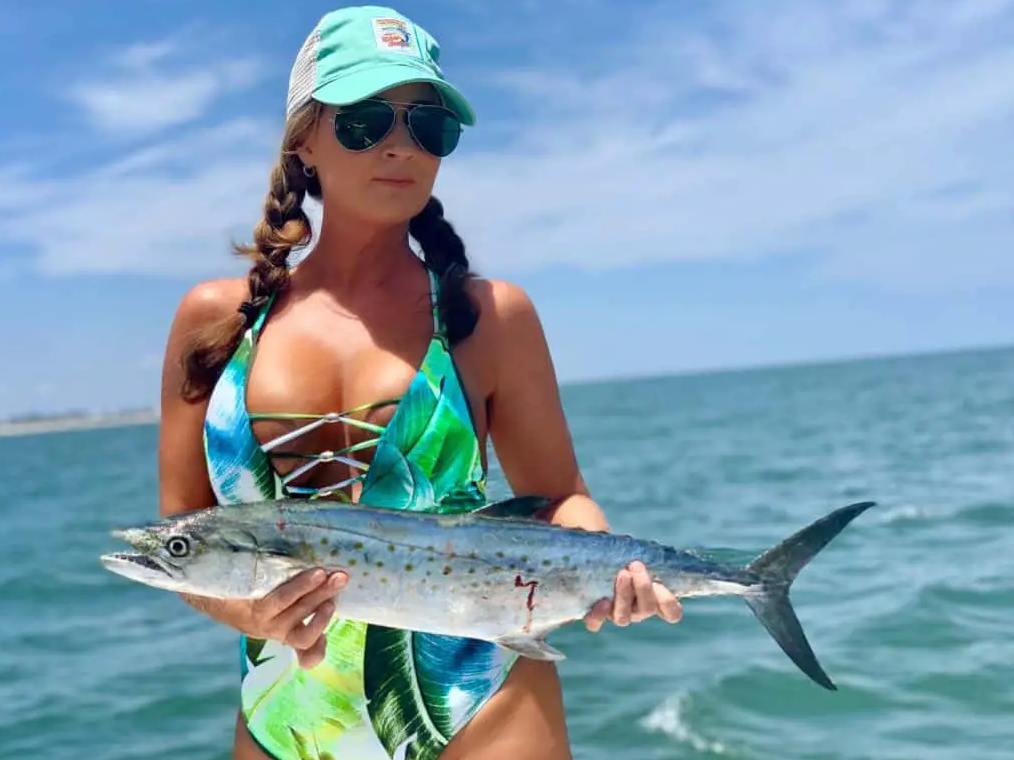
As an angler, you can still do your part to help conserve Spanish mackerel populations. One way to do this is by practicing catch and release.
If you are not planning on keeping the fish for consumption, gently release it back into the water as quickly as possible.
This can help reduce the amount of stress put on the fish and increase its chances of survival.
Another way to help conserve Spanish mackerel populations is by using circle hooks instead of J-hooks. Circle hooks are designed to hook the fish in the corner of the mouth, reducing the risk of injury and increasing the chances of survival upon release. Additionally, circle hooks can help reduce the number of undersized fish that are caught, as they tend to hook larger fish.
By following these conservation efforts, you can help ensure the sustainability of Spanish mackerel populations and continue to enjoy the thrill of surf fishing for years to come.
Frequently Asked Questions on Surf Fishing for Spanish Mackerel
What is the best bait to use when surf fishing for Spanish Mackerel?
The best bait to use when surf fishing for Spanish Mackerel is live baitfish or brightly colored artificial lures that mimic mackerel prey. Some commonly used live baitfish include mullet, pinfish, and sardines. When using artificial lures, it’s recommended to use lures that imitate the look and movement of small baitfish, such as silver spoons, jigs, and soft plastic lures.

What is the best surf lure for catching Spanish Mackerel?
The best surf lure for catching Spanish Mackerel is one that closely resembles the baitfish that they feed on. Some popular lures for Spanish Mackerel include silver spoons, jigs, and soft plastic lures. It’s also important to use lures that are heavy enough to cast a good distance into the surf, where Spanish Mackerel are often found.
What are the best conditions for catching Spanish Mackerel?
Spanish Mackerel are typically found in water that is anywhere from 20 feet to 5 feet deep. They are also known to prefer water that is clear and has a temperature between 68-85 degrees Fahrenheit. When fishing for Spanish Mackerel, it’s important to look for areas with strong currents and plenty of baitfish.
What time of day is best for catching Spanish Mackerel?
Spanish Mackerel can be caught at any time of day, but they are most active during the early morning and late afternoon. During these times, they are more likely to be feeding on baitfish near the surface of the water. However, Spanish Mackerel can be caught throughout the day, especially if the conditions are right.
What is the best rig setup for catching Spanish Mackerel?
The best rig setup for catching Spanish Mackerel is a simple rig with a long leader and a weight attached to the bottom. This allows the bait to drift naturally in the current, which is important when targeting Spanish Mackerel. Some anglers also prefer to use a popping cork to create a commotion on the surface of the water, which can attract Spanish Mackerel to the bait.
Are Spanish Mackerel good to eat?
Yes, Spanish Mackerel are good to eat. They have a firm, white flesh that is mild and slightly sweet. Spanish Mackerel can be prepared in a variety of ways, including grilling, baking, and pan-frying. It’s important to properly clean and fillet the fish before cooking to ensure the best flavor.
Hit the Beach and Catch some SMACKS!
Surf fishing for Spanish mackerel can be a thrilling and rewarding experience if you follow these tips and techniques. Remember to use the right gear, choose the right bait and lures, focus on fast retrieve, pay attention to the tides and currents, and look for signs of activity. With some patience and practice, you can catch more Spanish mackerel in the surf and enjoy their delicious taste.

If you see birds diving in the surf, or see schools of finger mullet swimming in the waves, grab your rod, silver spoons, and wire leaders and put the “Smack Down” on some SMACKS! Remember to use caution when handling these fish, as they have sharp teeth and can cause injuries.
Also, check the local regulations before keeping any fish, as there will more than likely be size and bag limits in your area. If you plan on taking some for the dinner table, keep what you can use and release the rest to fight another day.
As always, stay safe, enjoy the journey and please try to leave it cleaner than you found it. If you have any comments, questions, ideas or suggestions please leave them in the comment section below and I’ll get back to you asap. You can follow us on Facebook: Rex The Beach Angler, Instagram: thebeachangler7, Twitter: @AnglerBeach, and YouTube: Man Art Creations.
P.S. – Thanks so much for checking out our blog we really appreciate it. Just so you know, we may receive a commission if you click on some of the links that appear on our site. This helps us keep our content free and up-to-date for everyone. We appreciate your support!
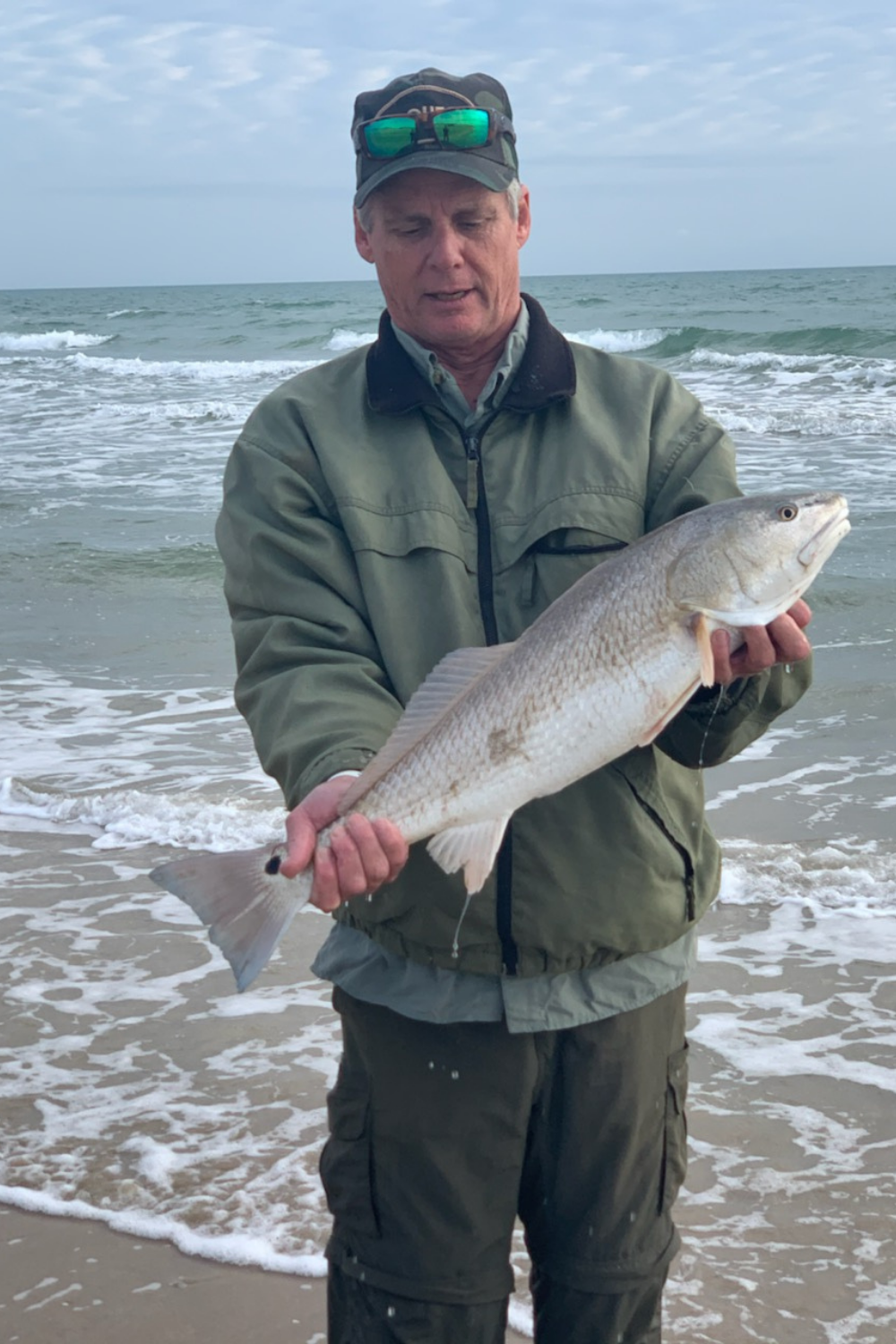
A life long surf fisherman with 50+ years of experience, I am also an avid hunter and outdoorsman. I will be sharing my passion for the outdoors with you so be prepared for hunting, fishing, camping, hiking and more. Along with gear reviews and the latest trends and innovations in the outdoor industry.

